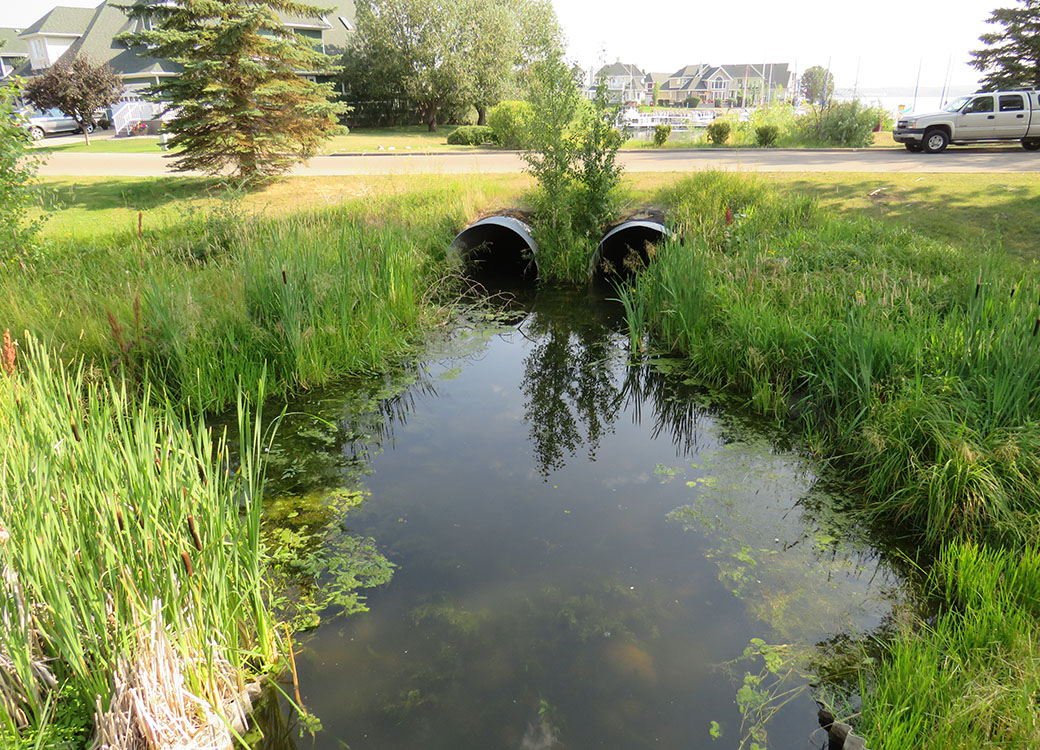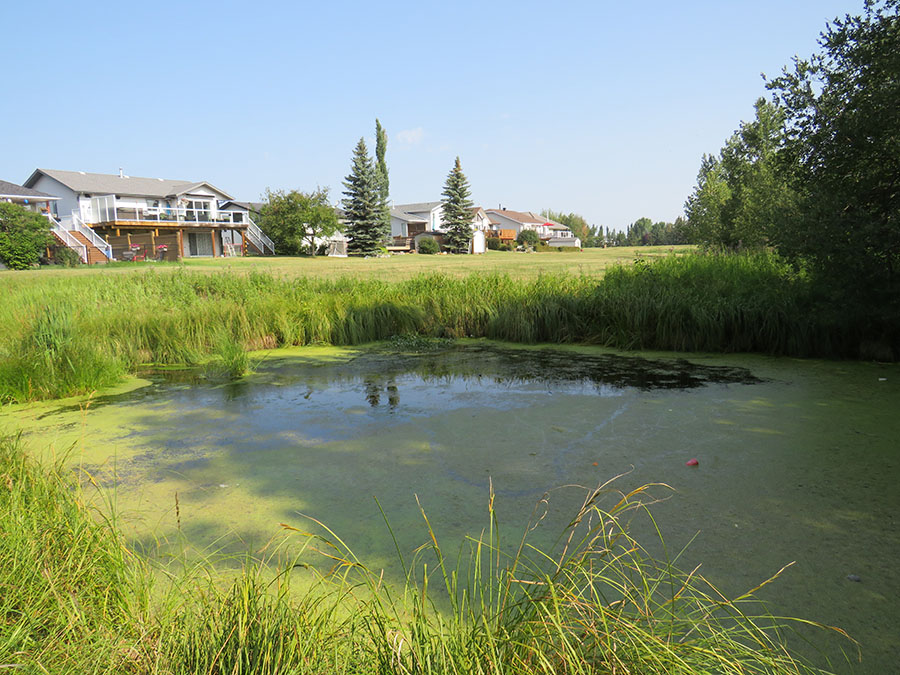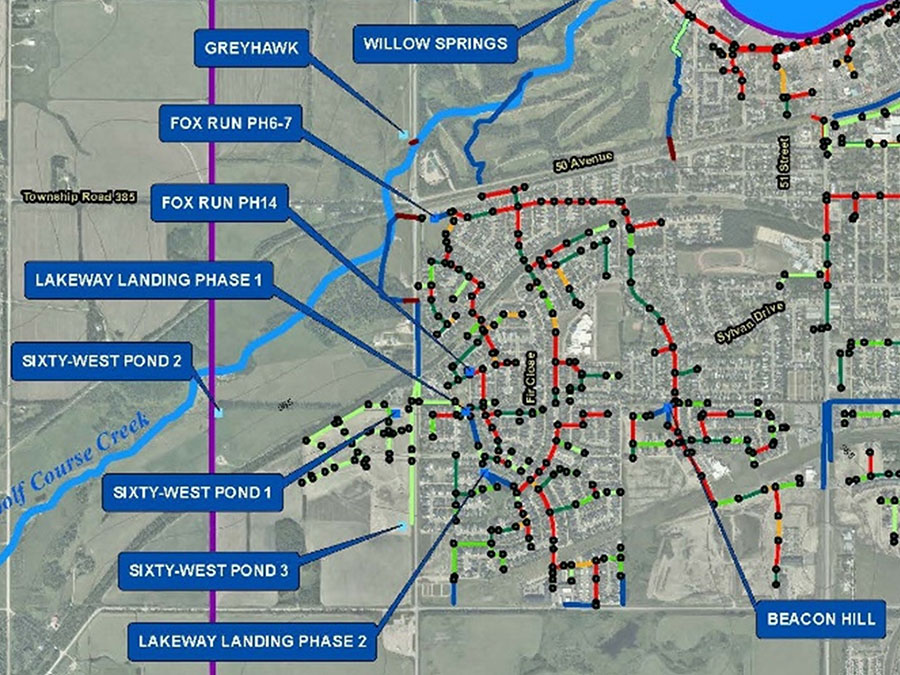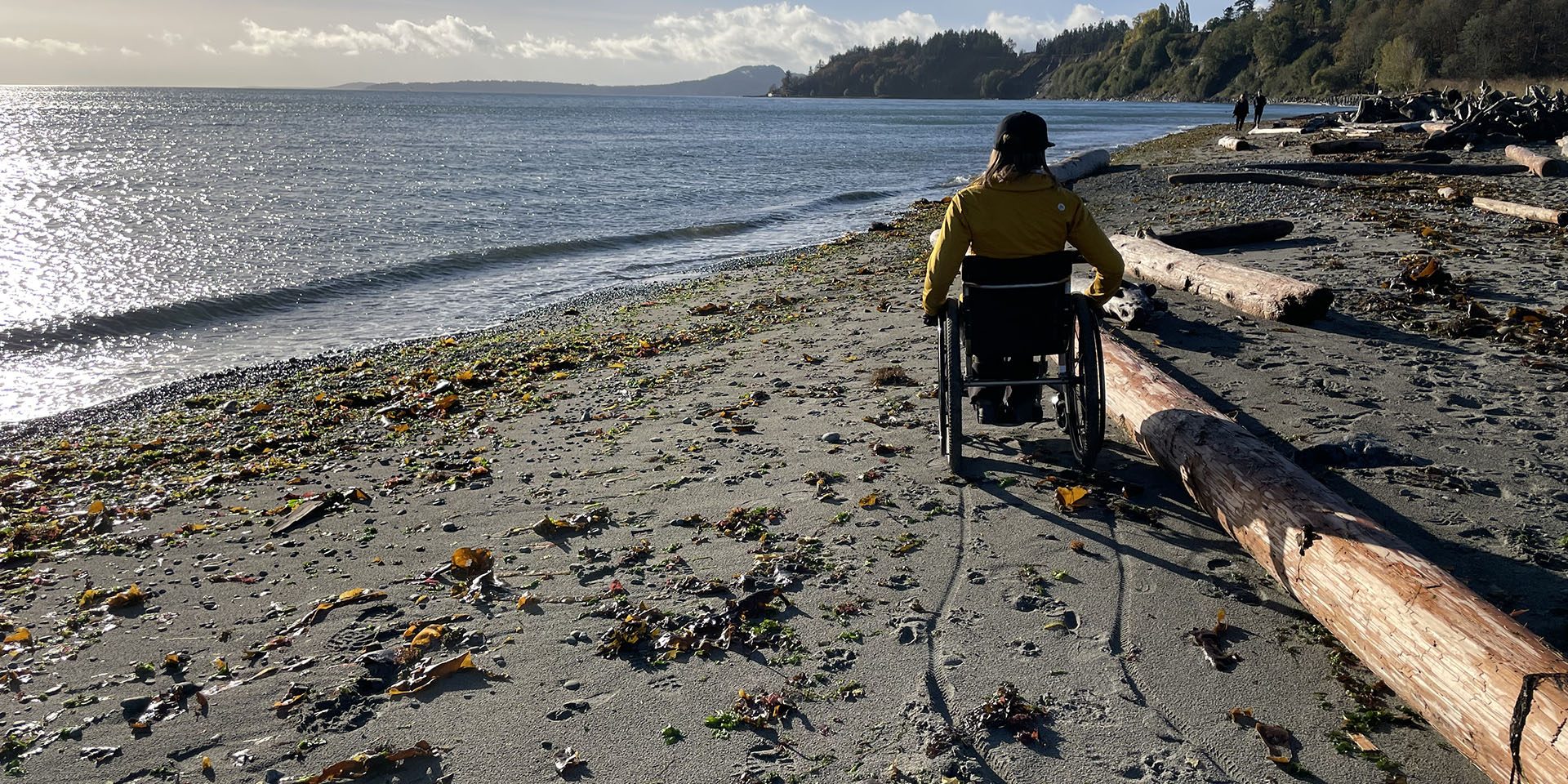Town of Sylvan Lake Stormwater Management Plan
2018 – 2019 | Sylvan Lake, AB
To address drainage concerns and water quality issues, and to develop an understanding of projected capital costs associated with improvements to the stormwater system, the Town of Sylvan Lake (the Town) undertook an update to their 2010 Stormwater Master Plan. The Town selected McElhanney based on our familiarity with this type of work and our wide range of in-house services, to complete the update and help guide the planning and cost forecasting for the Town’s stormwater servicing over the next 20 years.
To lay the foundation for analyzing the Town’s existing and future stormwater system, a data gap analysis was completed. The analysis revealed substantial areas of missing information, mainly within the older parts of Town. To effectively manage personnel resources, the results of the data gap analysis were reviewed to determine where assumptions could be made, and where field data collection would be necessary to meet project goals. McElhanney then quickly deployed survey crews to fill in missing asset information, such as pipe inverts.
Once our survey crews filled the gaps in knowledge, a current and future state assessment was completed. To inform the assessment, an all-pipes lot level dual-drainage model was developed in PCSWMM. The model allowed for the evaluation of the Town’s minor (five-year) and major (100-year) storm systems under various conditions and included the consideration of potential rainfall increases due to climate change, and future land uses. The detailed model allowed us to quickly identify specific constraints within the existing stormwater system. For example, a key challenge for the Town is that the downtown core is completely drained by two pump stations constructed in the 1980s. To address capacity concerns with the pump stations, McElhanney explored and proposed a combination of regional storage and pump station improvements which will be implemented over the next ten years.
As a result of the current and future state assessments, opportunities for the Town to improve the level of service offered to residents were identified. Various improvement pathways were then conceptualized and cost estimated were prepared. The proposed improvements included, sewer upgrades, pump station upgrades, Low Impact Development Techniques, storage solutions, and sedimentation basins. The proposed projects were then ranked based on perceived importance and cost. The projects were then allocated as part of the five-year, ten-year, or 20-year capital plan. The final plan was presented and accepted by Council. Following completion of the plan, McElhanney then held a two-day workshop to train Town staff on the use of the SWMM model developed and discuss aspects of the proposed projects.
McElhanney provided an affordable and actionable plan that identified and addressed the Town’s stormwater issues, and offered a phased road map and costing strategies to complete the work over the next 20 years.




